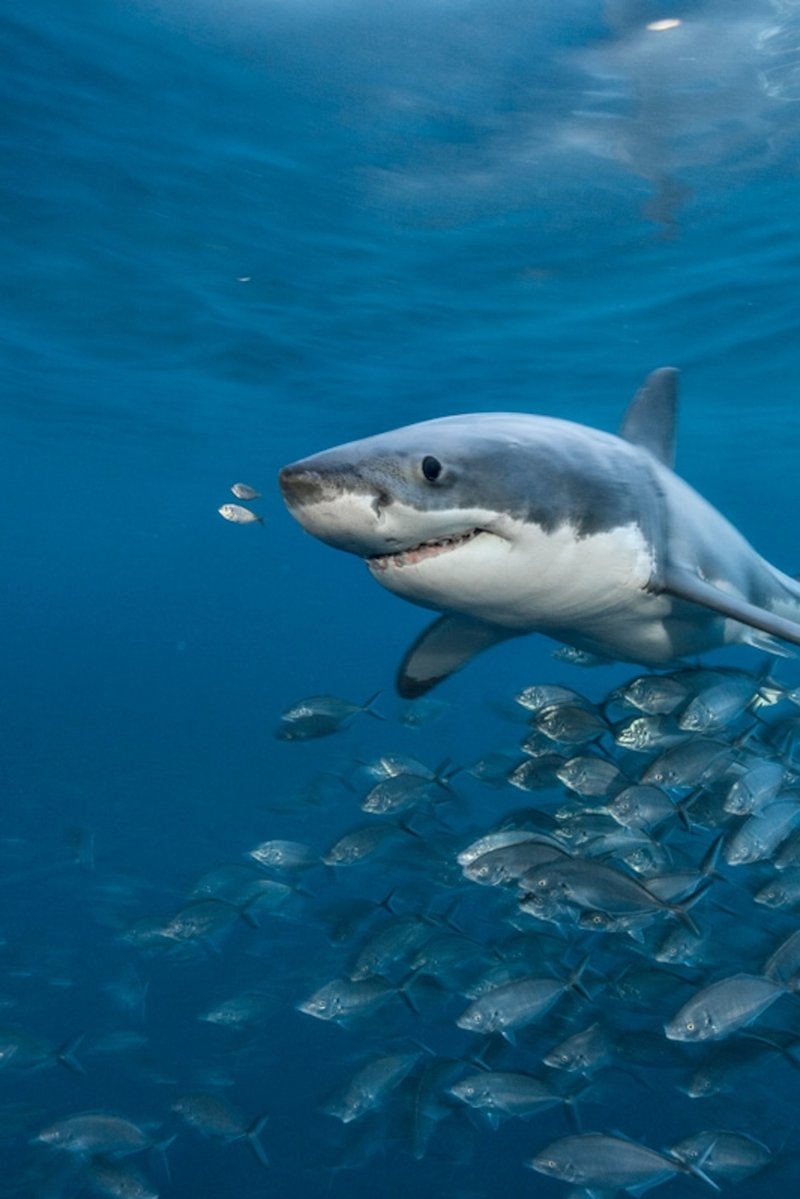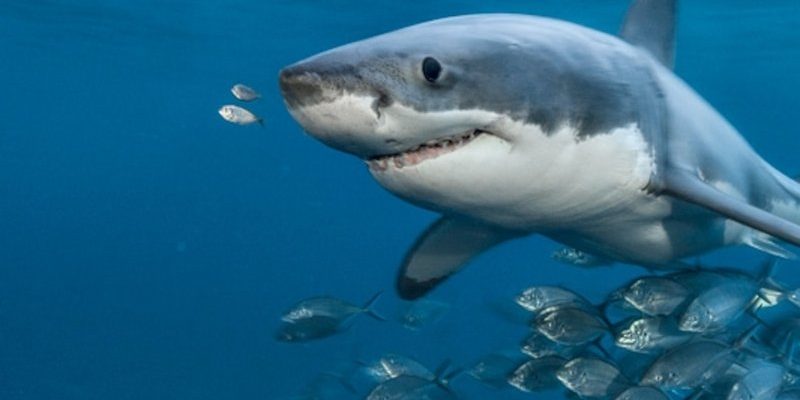
Like a living fossil, the great white has been around for millions of years, adapting and thriving in various environments. Knowing some fascinating facts about this incredible creature might change your perspective. So, let’s dive into the ocean and explore the top ten intriguing truths about the great white shark!
1. Great Whites Are Not Just Big Fish
Despite their size—great whites can grow over 20 feet long—many people mistakenly think of them as just big fish. Here’s the thing: sharks belong to a group called elasmobranchs, which are cartilaginous fish. Instead of bones, they have a skeleton made of cartilage, similar to what you find in your nose. This unique structure allows them to be both flexible and agile hunters.
Great whites are classified under the family Lamnidae, which includes other fast swimmers like mako sharks. This family grouping highlights their shared traits, including a streamlined body and a powerful tail, making them excel in open water. Their adaptability and evolutionary features show just how well they’ve survived through time.
2. They Have a Unique Hunting Strategy
When it comes to hunting, great whites are nothing short of brilliant. They employ a stealthy strategy often compared to surprise attacks. Imagine a cat stalking a mouse—great whites do something similar in the water. They use their keen senses, especially their ability to detect electrical fields emitted by their prey, to pinpoint exactly where their next meal is swimming.
Once they’ve located a potential meal, they often employ the element of surprise. They make a sudden, explosive ascent from below, sometimes even breaching out of the water. This not only helps them catch their prey off guard but can also create a spectacle that’s thrilling to watch. So, what might appear as a ferocious hunter is actually a patient strategist.
3. Great Whites Have a Complex Social Structure
You might think of sharks as solitary creatures, but great whites actually have a more complex social structure than you’d expect. Research shows that they do form social bonds, often aggregating in certain areas based on food availability or mating opportunities. They’re known to have “home ranges,” where they frequently return for food or social interactions.
Interestingly, great whites can even recognize each other! They have been observed interacting and showing different behaviors depending on their social relationships. Imagine running into an old friend; these sharks might greet familiar faces or avoid those they’ve had conflicts with before. Understanding their social dynamics helps researchers learn more about their behavior and conservation needs.
4. They Are Apex Predators
Great whites hold the title of apex predators in their ecosystem. This means they sit at the top of the food chain, with no natural predators (except for orcas, but that’s a whole different story). Their presence is crucial for maintaining the balance of marine life. By keeping the populations of seals, fish, and other marine animals in check, they help ensure a healthy ecosystem.
Though they often get a bad rap for their predatory nature, great whites play an essential role in supporting biodiversity. When they hunt, they typically target the weakest members of prey populations, which helps keep species healthy. It’s a natural process of selection and survival that has been happening for ages.
5. They Can Detect a Drop of Blood From Miles Away
Imagine being able to smell a drop of blood in a swimming pool from miles away—that’s the incredible capability of great white sharks. Their sense of smell is finely tuned, aided by special organs called olfactory bulbs. These organs can detect tiny concentrations of substances, including blood, in the water.
This amazing ability allows them to locate prey from incredible distances. It’s said that they can sense a drop of blood in the water up to a quarter of a mile away! This proficiency not only helps them find food but also keeps them connected to their environment, making them even more formidable hunters.
6. Great Whites Can Live for Over 70 Years
While you might think of great whites as fearsome hunters, they also have an unexpectedly long lifespan. On average, these sharks can live to be around 70 years old. Some research suggests they may live even longer, with estimates of 100 years or more.
Their growth rate is quite slow, meaning they take a long time to reach maturity. Female great whites typically don’t start reproducing until they’re about 12-18 years old. Understanding their lifespan helps conservationists develop strategies to protect these amazing creatures, especially as they face threats from habitat loss and overfishing.
7. They Are Deep Divers
Great whites aren’t just surface swimmers—they’re skilled divers too. They can dive over 1,000 meters (about 3,280 feet) deep in search of prey, often following their food to different depths. This ability to dive allows them to access various marine environments, increasing their hunting opportunities.
During these dives, they can also regulate their body temperature, which helps them stay warm in cooler waters. This adaptation is crucial for their survival, as it allows them to thrive in a range of ocean habitats. Plus, their impressive diving skills make them one of the most adaptable sharks out there!
8. Great Whites Are Actually Quite Curious
Believe it or not, great whites can be quite curious creatures. They often investigate unusual objects in their environment, including boats and divers. However, this curiosity is often misunderstood—it’s not aggression; it’s simply their natural instinct to explore.
They may approach humans out of curiosity rather than out of a desire to attack. In fact, many shark attacks on humans are believed to be cases of mistaken identity. When a shark bites, it’s often just a way to understand what it is they’re encountering. Understanding this behavior can help lessen fears and misconceptions people have about these amazing animals.
9. They’re Vulnerable to Extinction
Despite their fascinating traits, great white sharks are classified as vulnerable by the International Union for Conservation of Nature (IUCN). Their populations are dwindling due to overfishing, habitat loss, and the impacts of climate change.
Conservation efforts are crucial to protecting great white populations, and many programs focus on research and education. By understanding their behaviors, habitats, and threats, we can work together to ensure that future generations can continue to marvel at these majestic creatures.
10. They Are an Icon of Ocean Conservation
Last but not least, great white sharks symbolize the need for ocean conservation. Their unique place in the marine ecosystem highlights the importance of preserving our oceans and the incredible species that call them home. Movies, documentaries, and research have brought awareness to their plight, fostering a greater appreciation for the natural world.
When you support conservation initiatives or simply educate yourself and others about sharks, you contribute to their protection. Great whites are not just fierce predators; they are essential players in maintaining ocean health. The next time you hear about a great white shark, remember—they deserve respect, understanding, and our efforts to protect their future.
As we’ve seen, the great white shark is a complex and fascinating creature with many layers to explore. From their sophisticated hunting tactics to their social structures, there’s so much to learn about these magnificent animals. So, the next time you’re at the beach or watching a documentary, take a moment to appreciate the incredible great white shark and all its wonders.

